Filipino Food: What to Eat in the Philippines
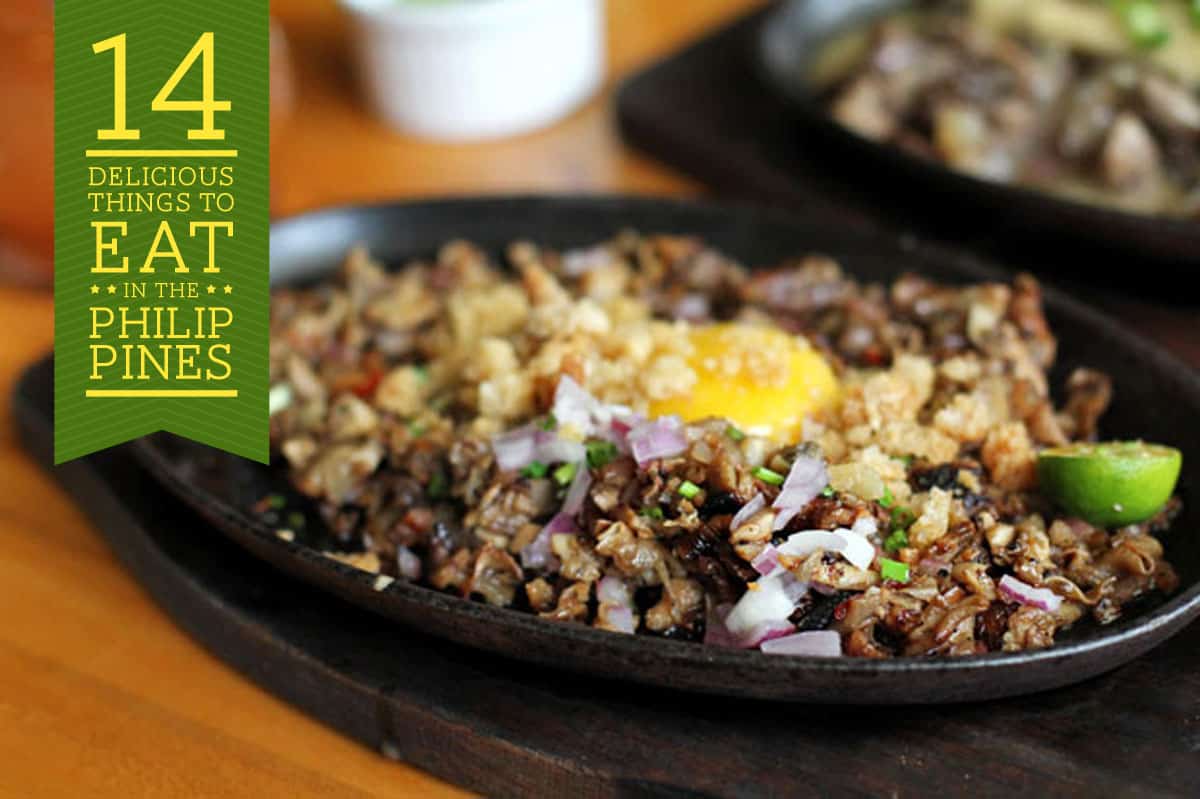
NOTICE: Your health and safety come first. Please adhere to the WHO recommendations and avoid any non-essential travel at this time. If travel is unavoidable for you, then please refer to these advisories on COVID-19 coverage from our friends at World Nomads and SafetyWing. Please be advised that all information on this website is for travel pre-COVID-19. We’ll update the information soon as new travel guidelines become clearer.
DISCLOSURE: Some of our articles contain affiliate links. The ones that do will have a disclosure statement at the bottom. You can refer to our privacy policy and terms of use for more information.
Three years ago, Andrew Zimmern proclaimed Filipino food to be the next great thing. So why hasn’t it really happened yet?
One reason, as food writer Joanne Boston speculated, is that people need to get over the potential “ick” factor that accompanies certain Filipino dishes. She’s right. It’s second nature to us Filipinos (and Asians in general) to eat things like offal and animal heads but we can’t expect the same from Westerners. Not everyone is like Andrew Zimmern. Apart from this French guy I went to school with, I’ve never seen anyone devour balut (duck embryo) with as much gusto as Andrew once did on TV. It was glorious.
Filipino food may not be as pretty as other cuisines like Japanese or Korean, but what we lack in presentation we more than make up for in flavor. Bottom line, our food is damn tasty. If you can get past that “ick” factor, then you’ll realize what Andrew did three years ago — Filipino cuisine is delicious.
Here are 14 things that any first-time visitor to the Philippines should try.
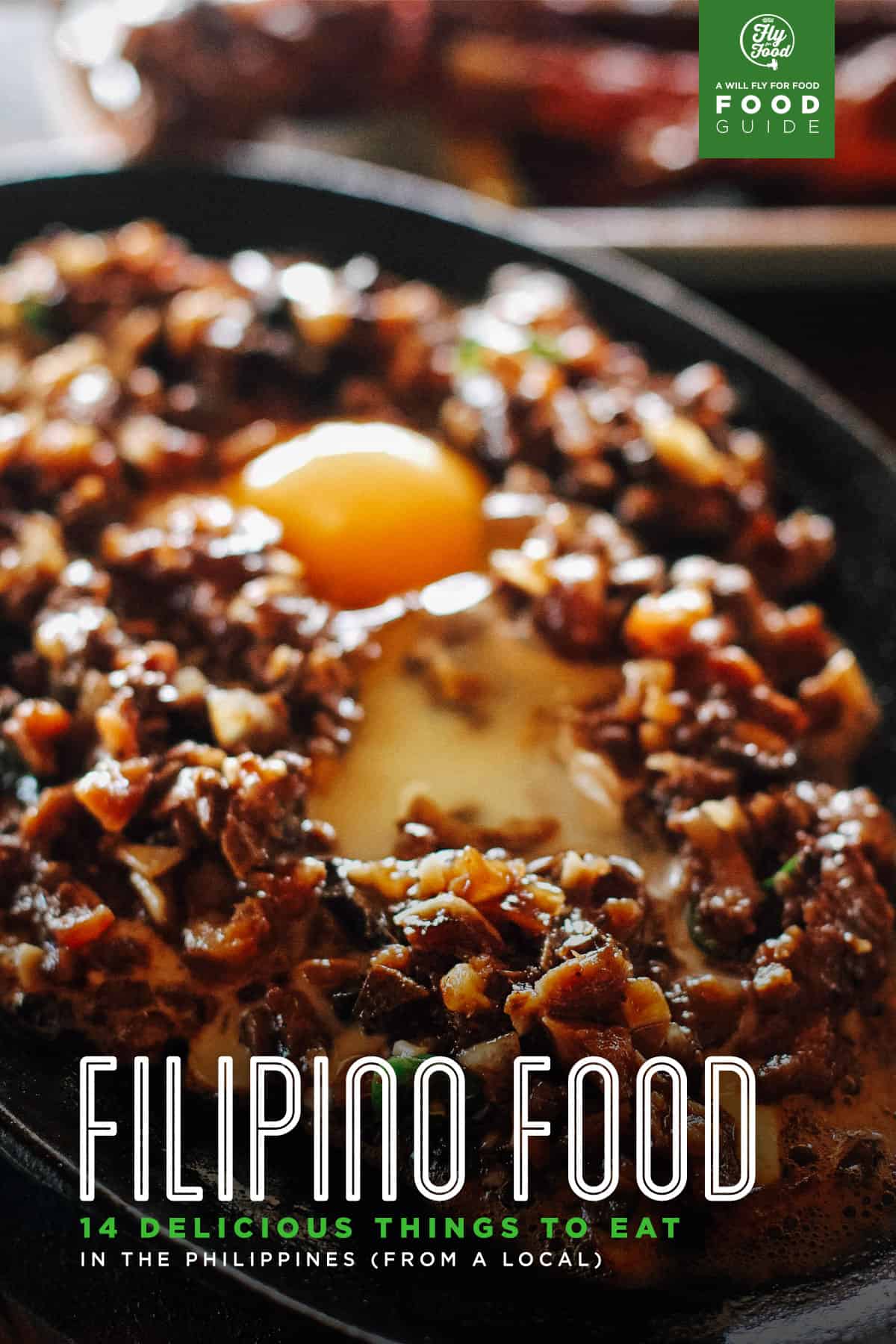
A beloved comfort dish, the way we Filipinos feel about tapsilog can probably be compared to how Malaysians feel about nasi lemak. Personally, it’s a strong contender for my last meal.
Tapsilog is a portmanteau word for tapa (cured beef) + sinangag (garlic fried rice) + itlog. It’s the most popular type of Filipino “silog” breakfast made up of garlic fried rice, egg, and a protein. Other popular “silog” breakfats include longsilog (longganisa – Filipino sausage), tocilog (tocino – pork fatback), and bangsilog (bangus – milkfish), just to name a few.
You can find tapsilog pretty much anywhere that serves breakfast. Restaurants in Manila known for serving good tapsilog include Max’s Restaurant, Rodic’s Diner, Rufo’s Famous Tapa, Sinangag Express, and Tapa King.
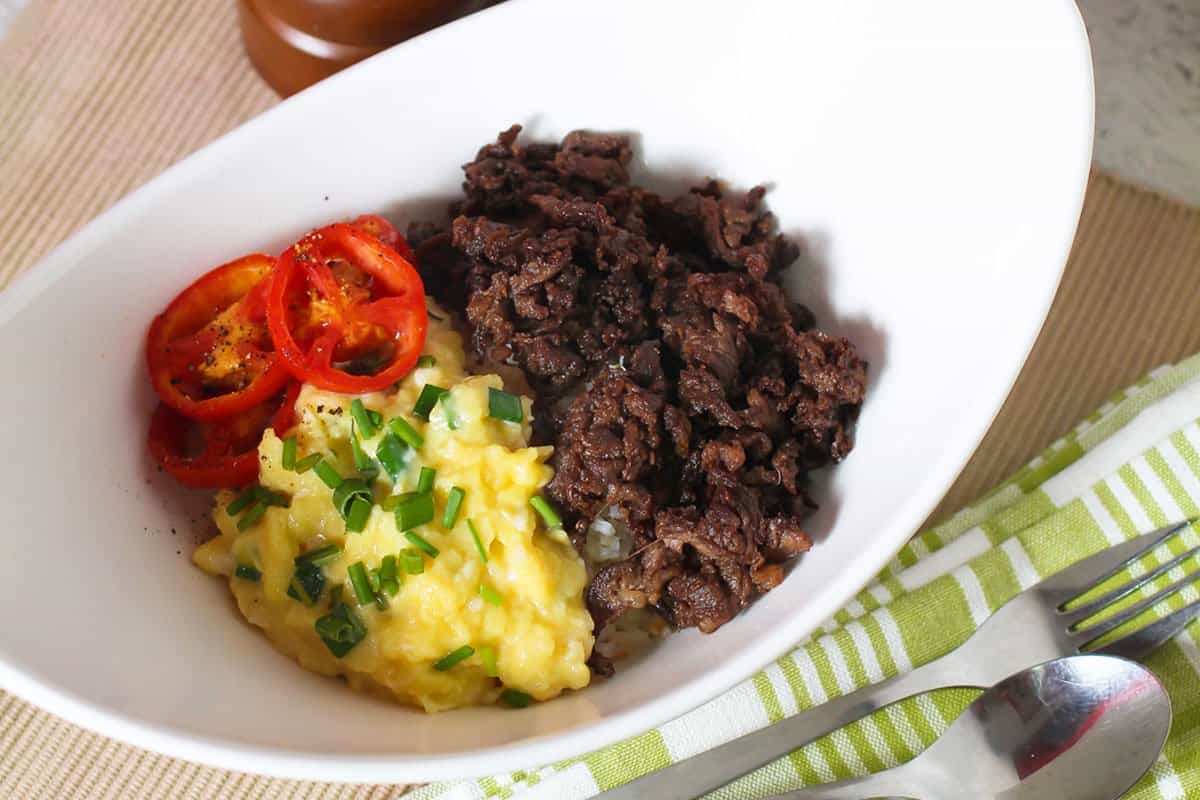
Inasal refers to chicken marinated in a mixture of lime, pepper, vinegar, and annato then grilled over hot coals while being basted with the marinade. Served with rice, vinegar, soy sauce, chili peppers, and calamansi (calamondin), chicken inasal is a regional dish from the Western Visayas region that’s become hugely popular throughout the Philippines.
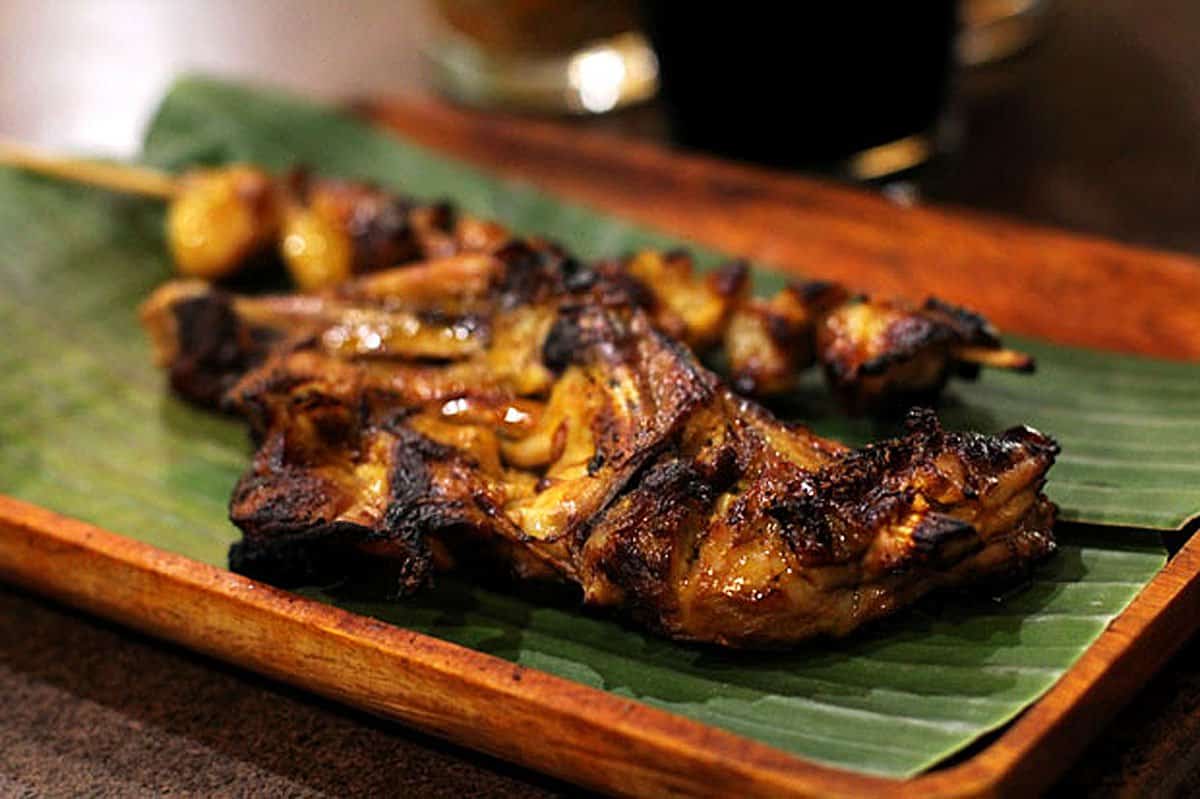
Popular inasal restaurants in Manila include Bacolod Chicken Inasal, JT’s Manukan Grille, Jay-J’s Inasal, and Mang Inasal. Our personal favorite is a little known place called Bacolod Chicken Parilla tucked away in a residential neighborhood in Quezon City. Here’s a video we shot at Bacolod Chicken Parilla to help whet your appetite.
The most iconic Filipino bar chow dish, sisig is made from chopped pig’s face, ears, and a generous amount of chicken liver. It’s usually seasoned with calamansi (calamondin) and chili peppers and is served sizzling on a cast iron plate. Originating from the Philippines’ (unofficial) culinary capital of Pampanga, it’s a hugely popular dish ubiquitous at bars and Filipino restaurants throughout the country. Andrew Zimmern once called it “one of his favorite dishes period”.
Restaurants in Manila known for their pork sisig include Trellis, Gerry’s Grill, Congo Grille, Razon’s of Guagua, and Mang Jimmy’s. Trellis was one of the first restaurants to introduce sisig to Manila. For me, it’s still the best.
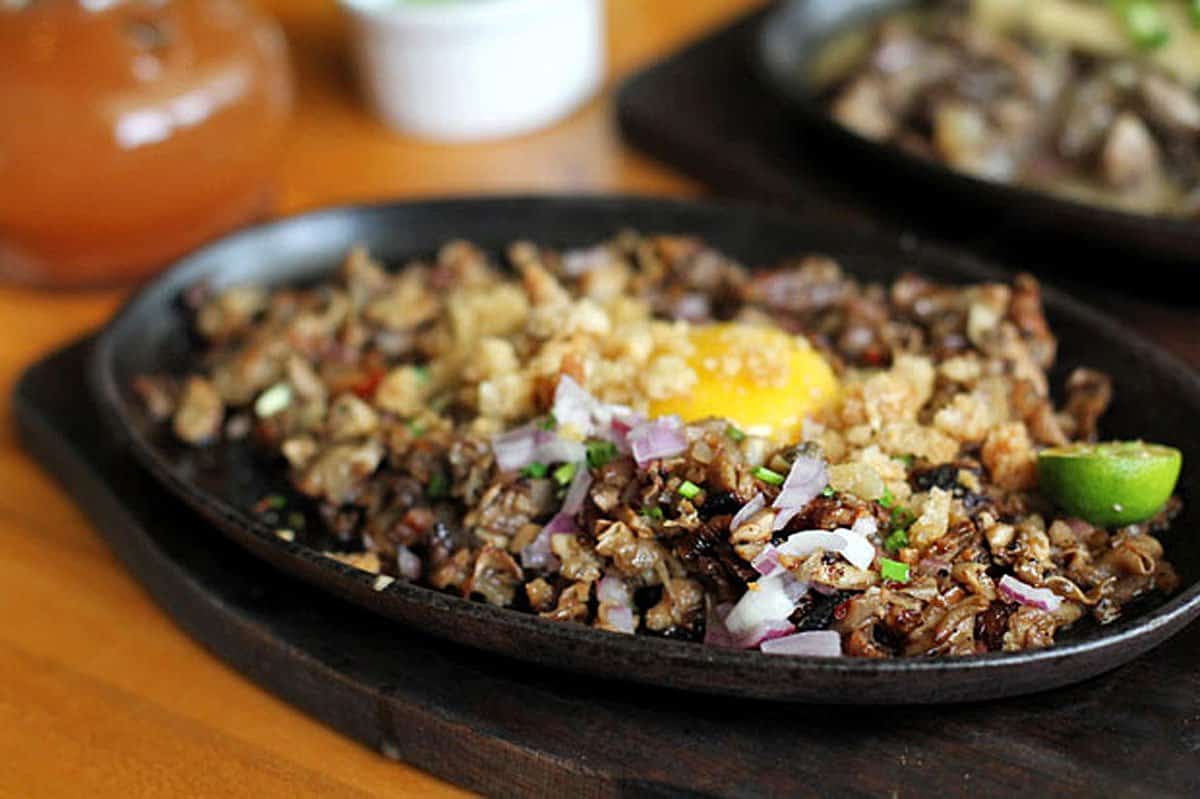
Pancit Bihon Guisado is a Filipino-Chinese dish made with sauteed rice noodles, meat, and vegetables. It’s a staple second only to rice. There are several types of pancit, but this is one of the most common and can be found in many Filipino eateries.
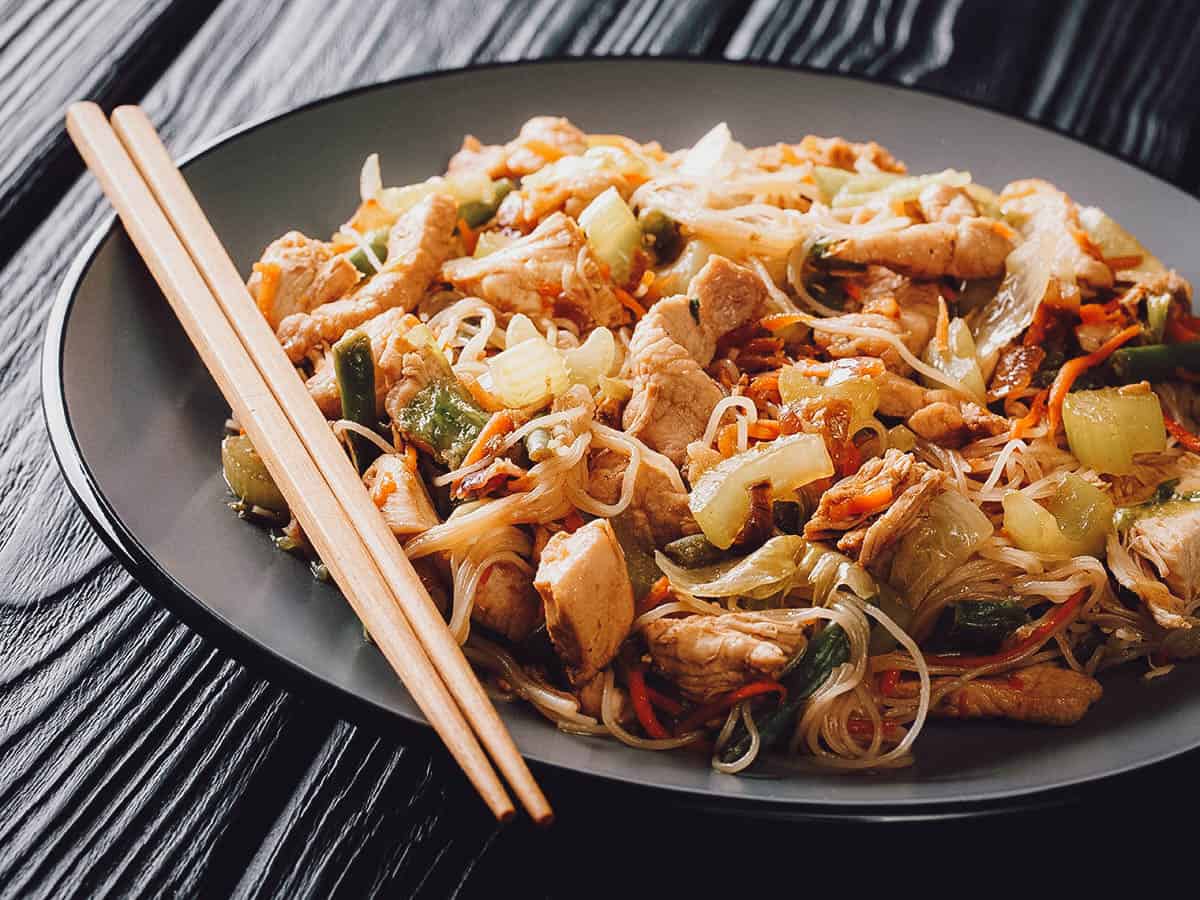
Crispy pata consists of deep-fried pig trotters or knuckles served with a soy-vinegar dip. If you’re a fan of lechon (roast pig), then you’ll love this. Some of the best places to get crispy pata include Abe, Sentro 1771, Cerchio, and Livestock. Livestock’s crispy pata is so tender that they use a popsicle stick to cut it up. The meat practically melts in your mouth.
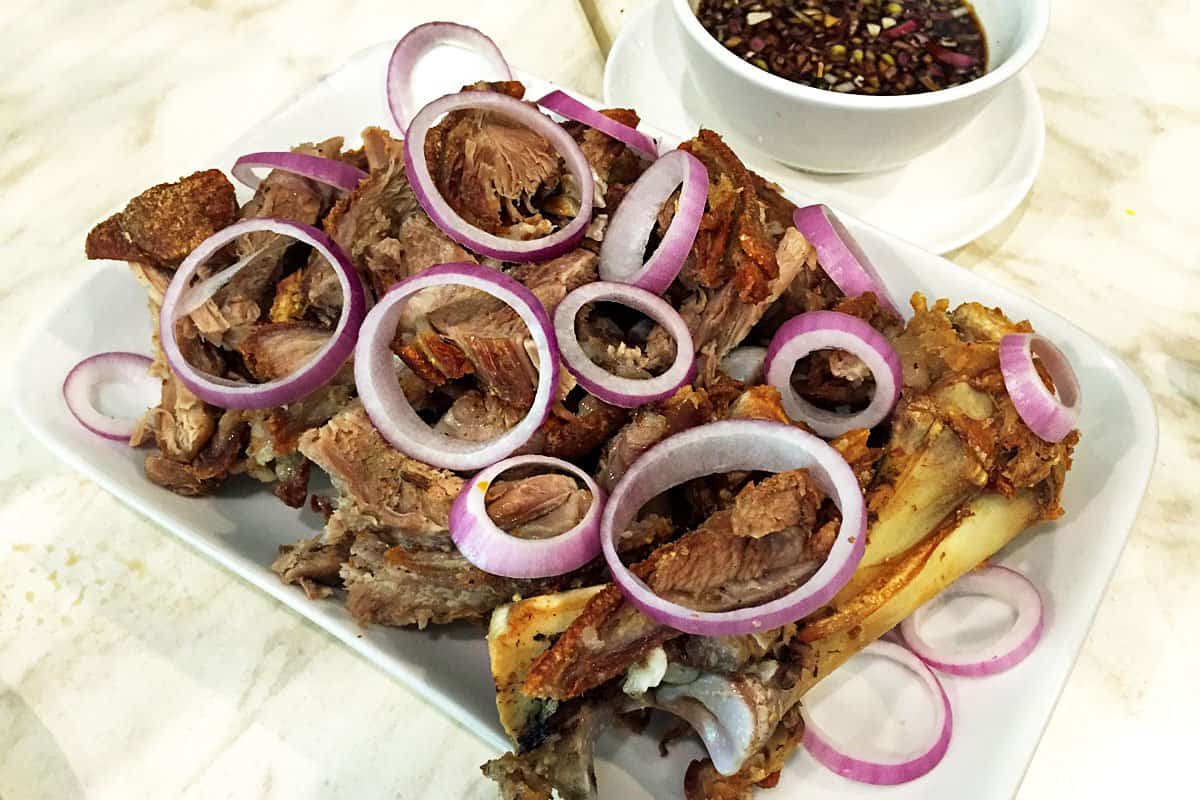
Another popular bar chow dish, chicharon bulaklak literally means “flower chicharon” and is made from pig messentery. The messentery is the thin, web-like structure that supports the small intestine. When the mesentery is detached, it forms a frill or ruffled-like ornament resembling a flower, hence the name of the dish.
Deep-fried and crisp with a nice chewy texture, it’s great dipped in vinegar and washed down with swigs of ice cold beer. Just don’t eat too much of it if you care about your heart. You can usually find chicharon bulaklak at Filipino restaurant bars like Baliwag, Pepeton’s Grill, or Manong’s.
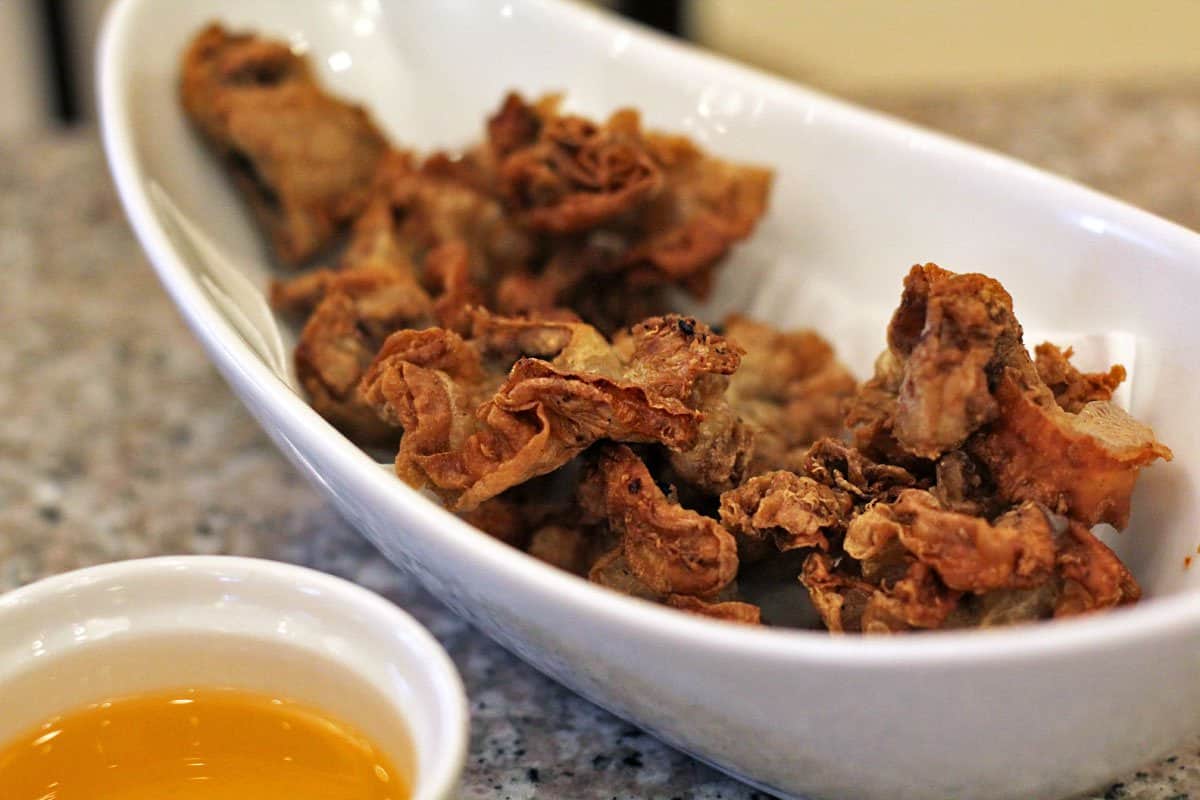
Sinigang is a soup or stew characterized by its sour and savory flavors. It’s traditionally tamarind-based and can be made with fish, pork, beef, shrimp, or chicken as its protein. Many Filipinos grew up eating sinigang so it’s a comforting dish for most. It’s similar to Malaysian singgang or Thai tom yum.
Some of the best examples of sinigang in Manila can be found at Abe, Sentro 1771, Wooden Spoon, and Romulo Cafe.
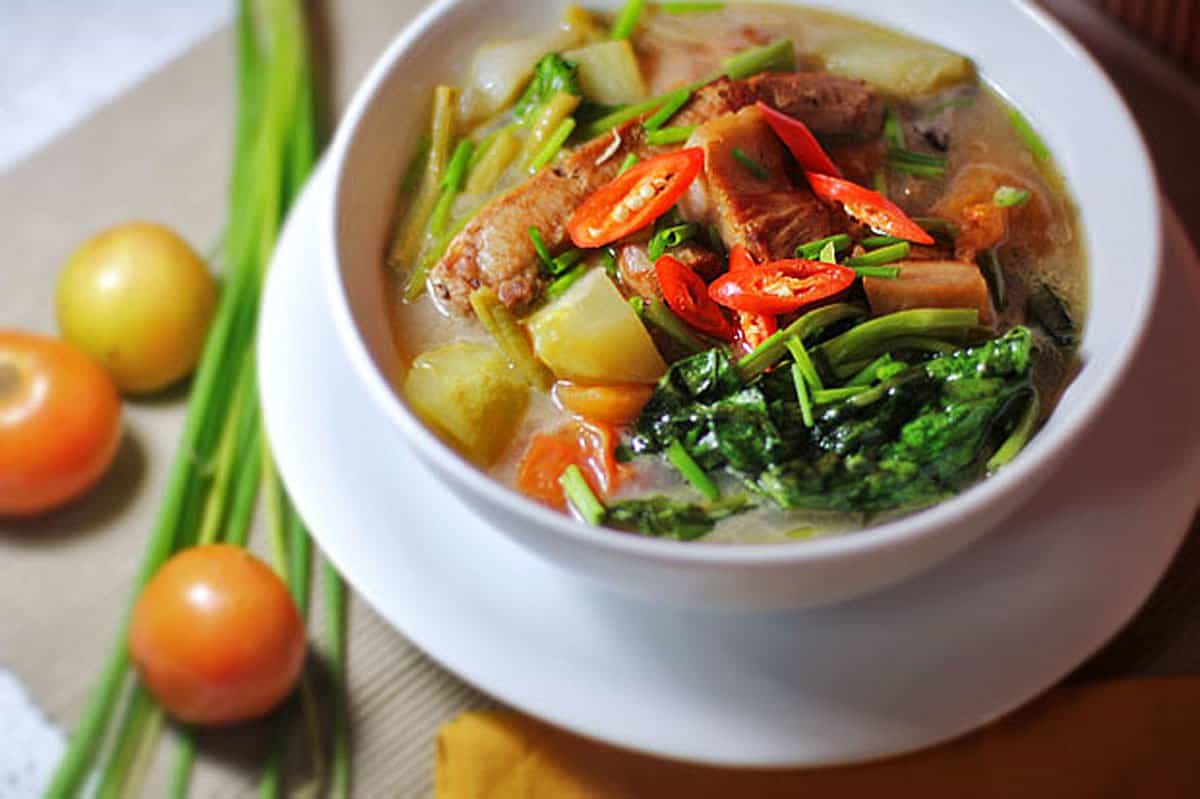
Kare-kare is a stew commonly made with oxtail, tripe, pork hocks, and vegetables. The stew is flavored with ground roasted peanuts or peanut butter, onions, and garlic before being colored with annatto and thickened with toasted or plain ground rice. It’s traditionally cooked and served in a clay pot called a palayok with a side of bagoong or fermented shrimp paste.
Restaurants known for serving good kare-kare in Manila include Sentro 1771, Bagoong Club, Abe, Victorino’s, and Mesa.
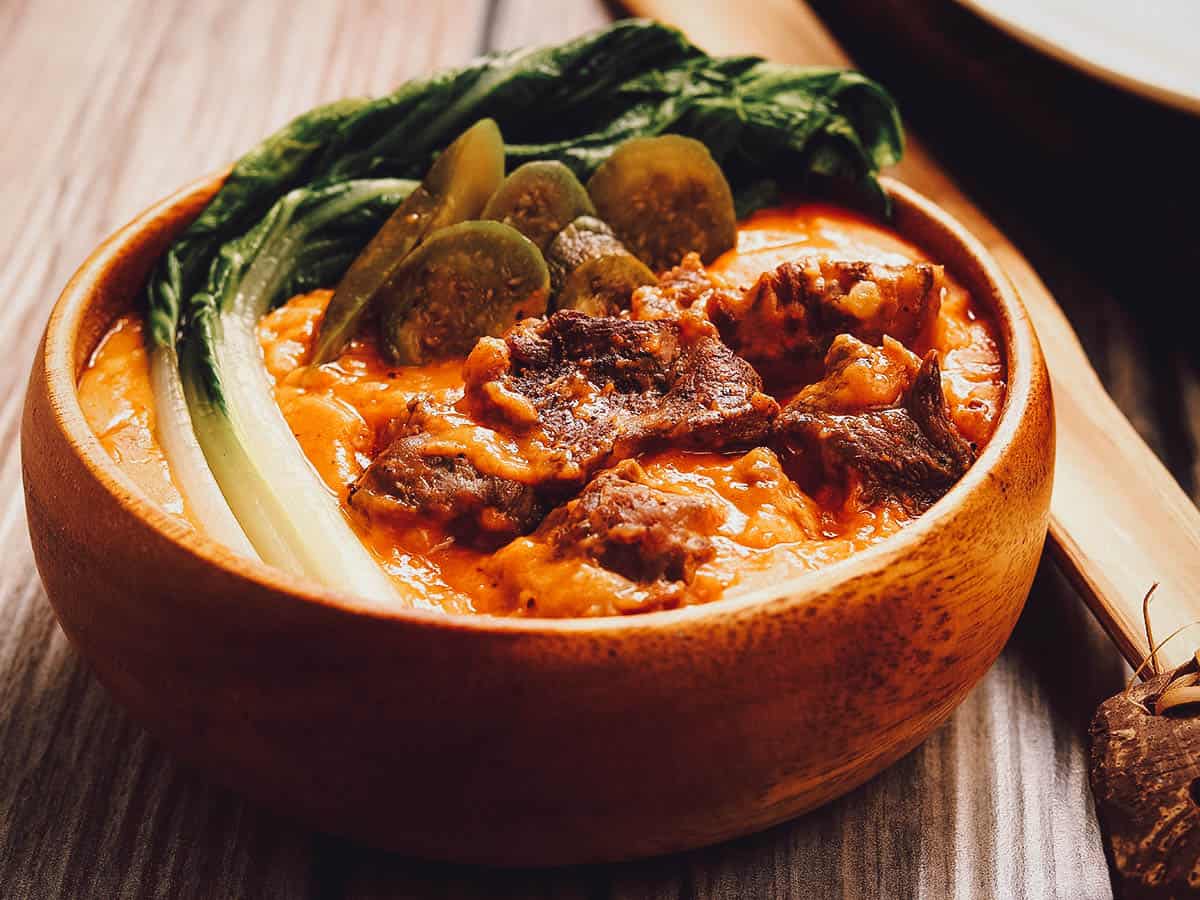
Dinuguan means “to be stewed with blood” and refers to a savory stew made with pork and/or pork offal — typically lungs, kidneys, intestines, ears, heart, and snout. It’s simmered in a rich, dark gravy of pig’s blood, garlic, chili, and vinegar and usually served with a side of puto or Filipino rice cakes.
Restaurants known for serving good dinuguan in Manila include Cafe Juanita, Kanin Club, and Lydia’s Lechon.
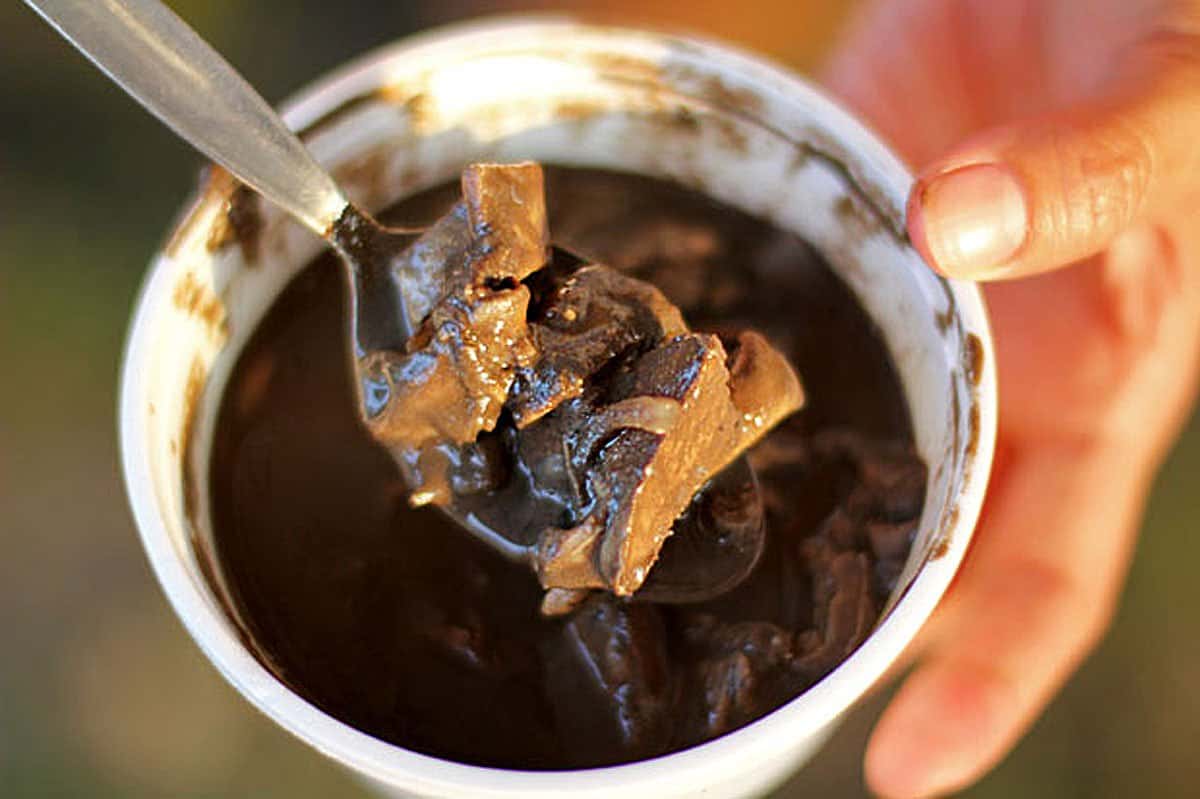
Arguably the most iconic and well-known dish in Filipino cuisine. From the Spanish word adobar meaning “to marinate”, adobo is a popular dish made with chicken or pork marinated in vinegar, soy sauce, black peppercorn, garlic, and bay leaf. Adobo is so popular that many consider it to be the unofficial national dish of the Philippines.
Good restaurants to try adobo in Manila include Cafe Adriatico, Adobo Connection, Gerry’s Grill, and Aristocrat.
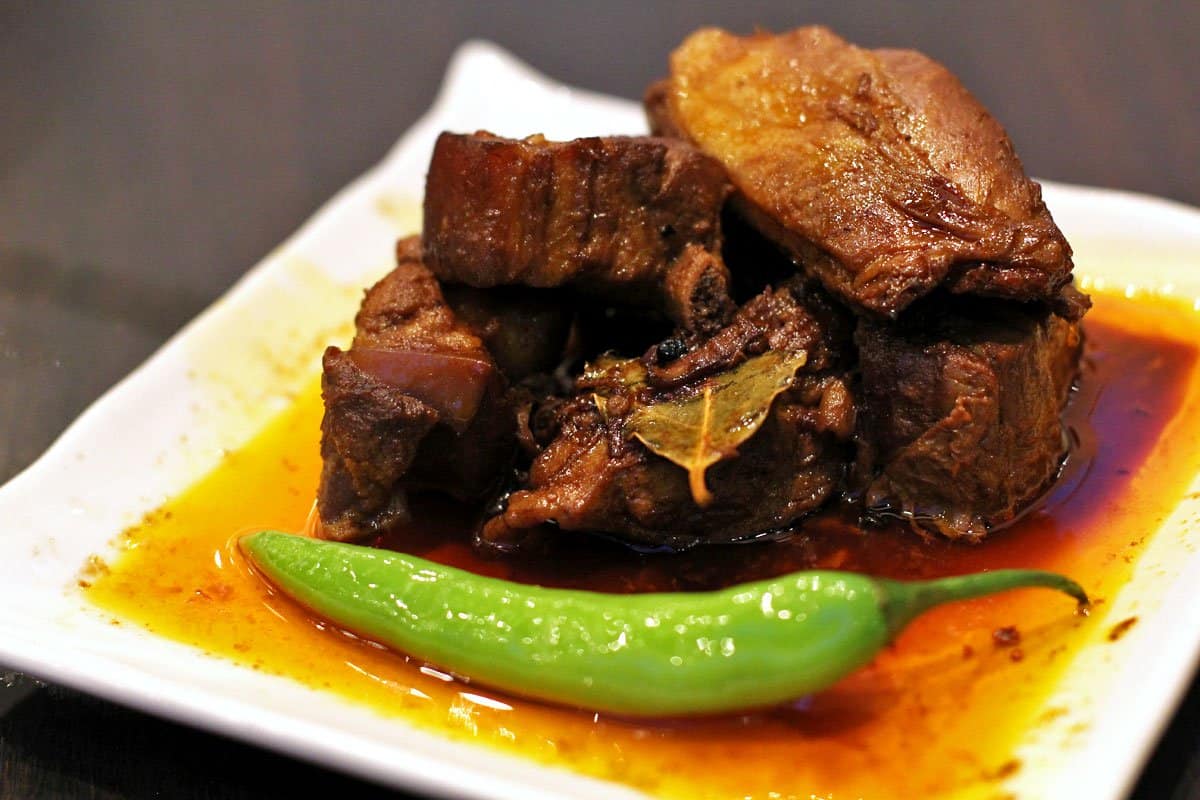
If adobo is the most famous Filipino dish, then balut has got to be the most infamous. A popular street food, balut is a developing duck embryo that’s boiled and eaten in its shell. It’s off-putting even for many Filipinos so I don’t blame you for not wanting to try it. Personally, I think it’s delicious.
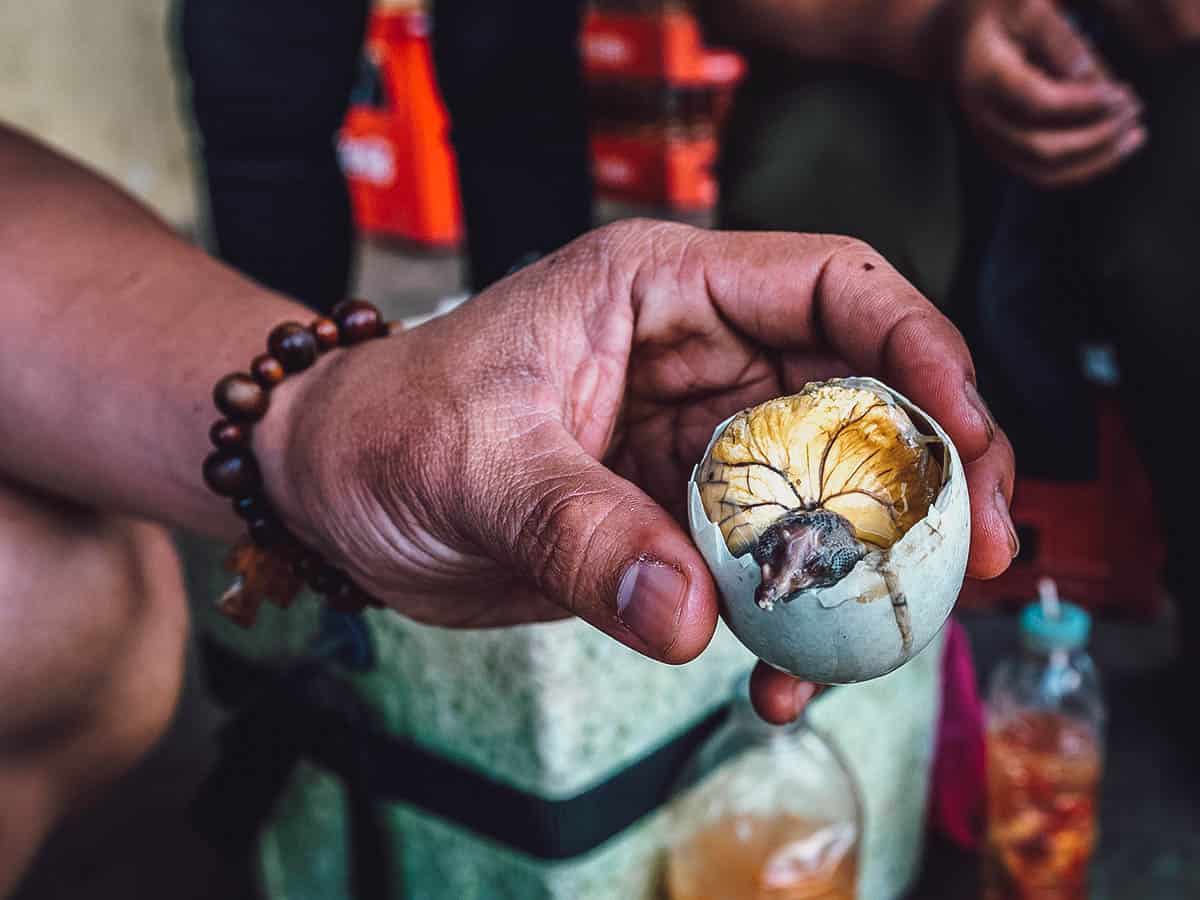
Bibingka is a type of rice cake traditionally made from galapong (milled glutinous rice), coconut milk, margarine, and sugar. A time-consuming dish to make, the mixture is poured into a clay pot lined with pre-cut banana leaves. The clay pot is then placed between the layers of a special clay oven that’s lit with charcoals placed below and above the pot for even cooking. Bibingka is especially popular during the Christmas season.
Ferino’s and Cafe Via Mare are two of the best places to get bibingka in Manila.
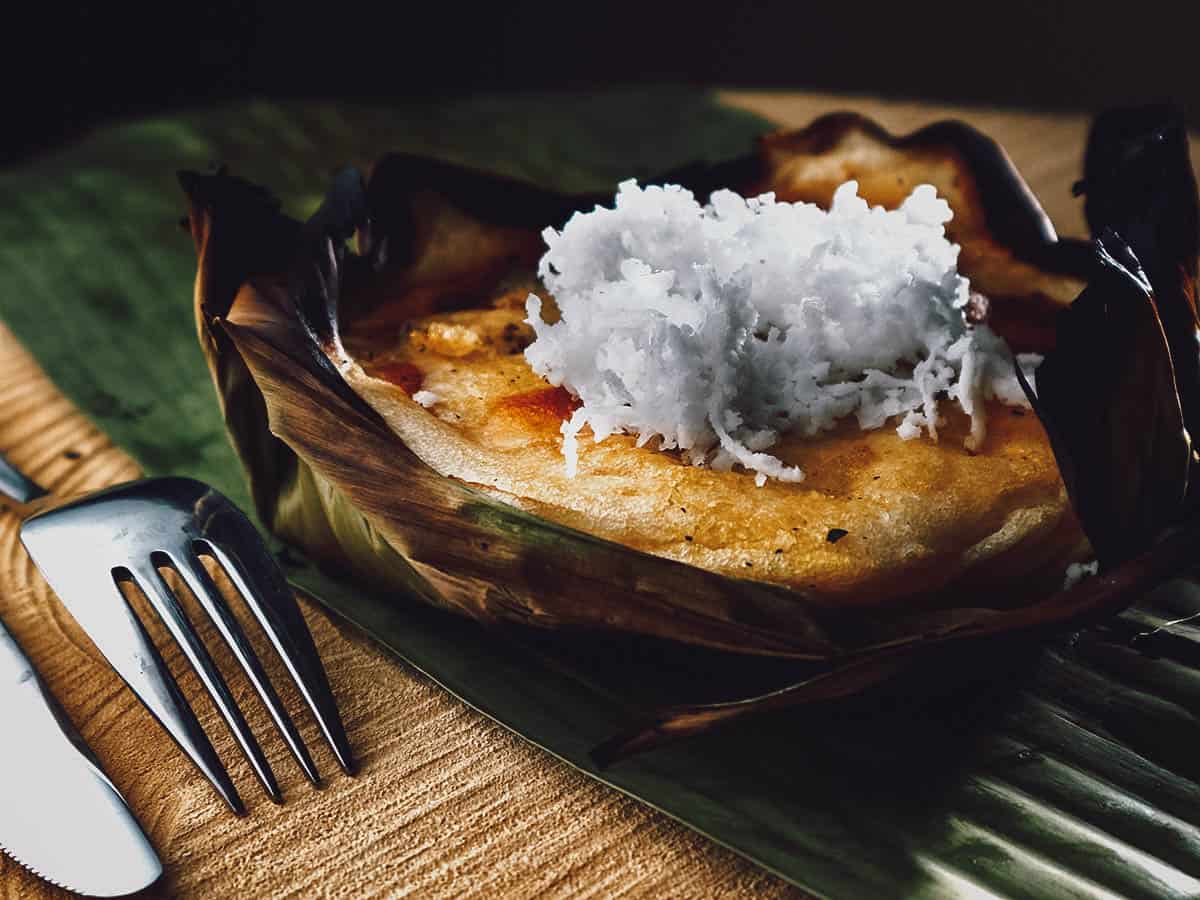
Sans rival is a Filipino dessert cake made with layers of buttercream, meringue, and chopped cashews. A rich, supremely decadent dessert, its name comes from the French phrase meaning “without rival”.
Estrel’s and Cafe Mary Grace are known to serve some of the best sans rival in Manila.
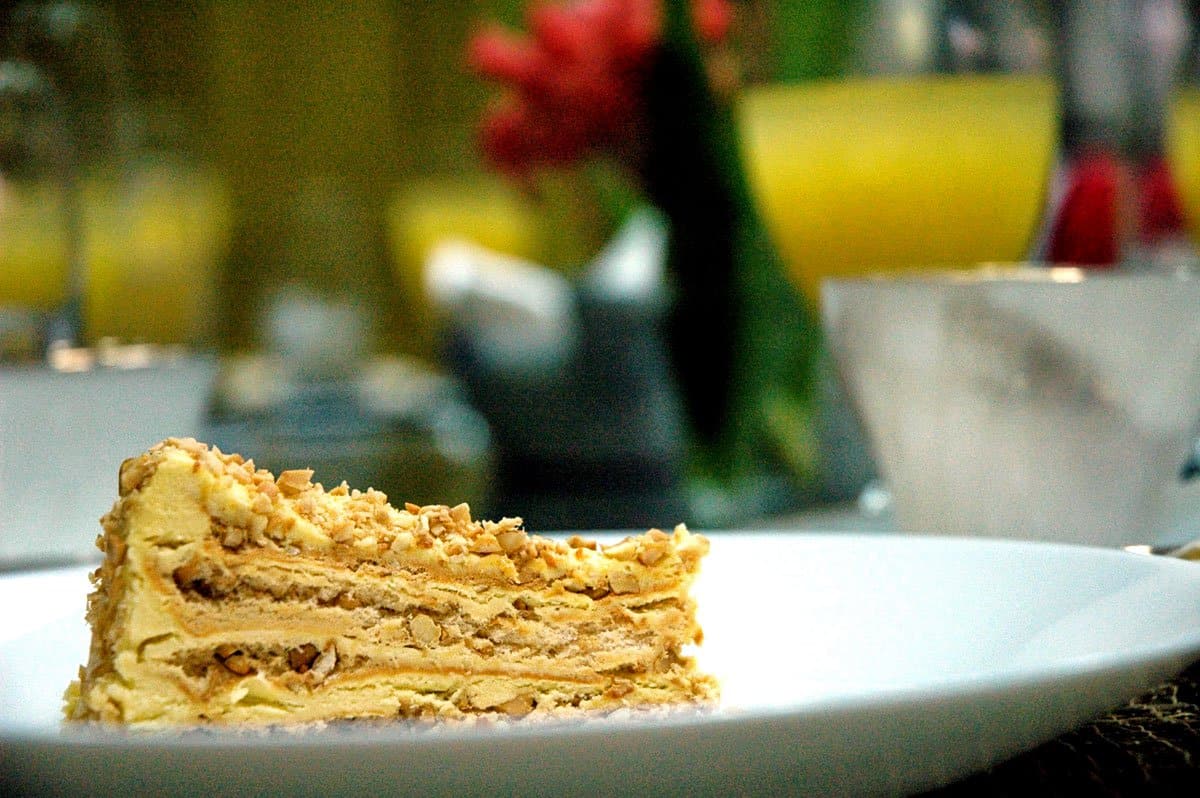
Picture borrowed from the Dude for Food
Arguably the most iconic of Filipino desserts. Meaning “mixed together”, halo-halo is a festive mixture of shaved ice and evaporated milk with a rainbow of ingredients like boiled kidney beans, garbanzos, kaong (sugar palm fruit), macapuno (young coconut), and plantains sweetened with sugar, among many others. The ingredients are first placed inside a tall glass, followed by the shaved ice which is then sprinkled over with sugar and topped with either leche flan, ube (purple yam), or ice cream. Evaporated milk is then poured into the mixture before serving.
Many places serve halo-halo but some of the best can be found at Cafe Via Mare, Kabigting’s, Razon’s of Guagua, Milky Way, and Nathaniel’s. Razon’s halo-halo is made using just four ingredients but I personally think it’s the best.
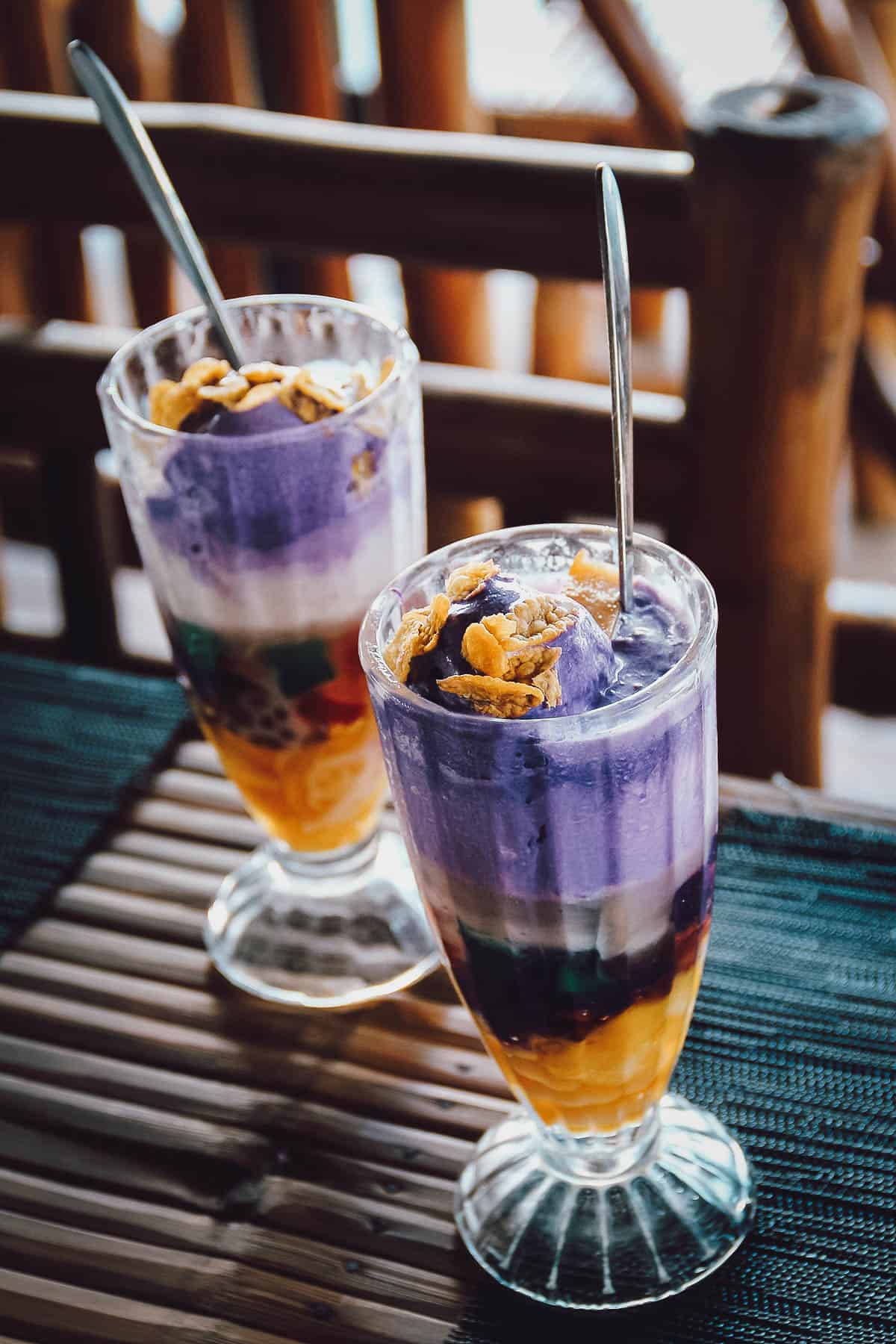
Some Filipinos might balk at this list, questioning why I left off one of our most popular and beloved dishes — lechon or roast pig. I hate to admit it, but neither Ren nor I are fans of lechon. *gasp!* Don’t kill us kababayans (fellow Filipinos), but apart from the skin, we don’t think lechon has much flavor. I know, I know, you’ll say that’s what the sarsa or liver sauce is for. Unfortunately, we’re not fans of sarsa either.
Cebu lechon is the exception though so if any foreigners want to try roast pig, then I suggest going for the Cebu variety. It’s pretty flavorful and doesn’t need any sarsa. This is the regional variety of lechon that Anthony Bourdain once hailed as the “best pig ever”.

132shares



Recent Comments